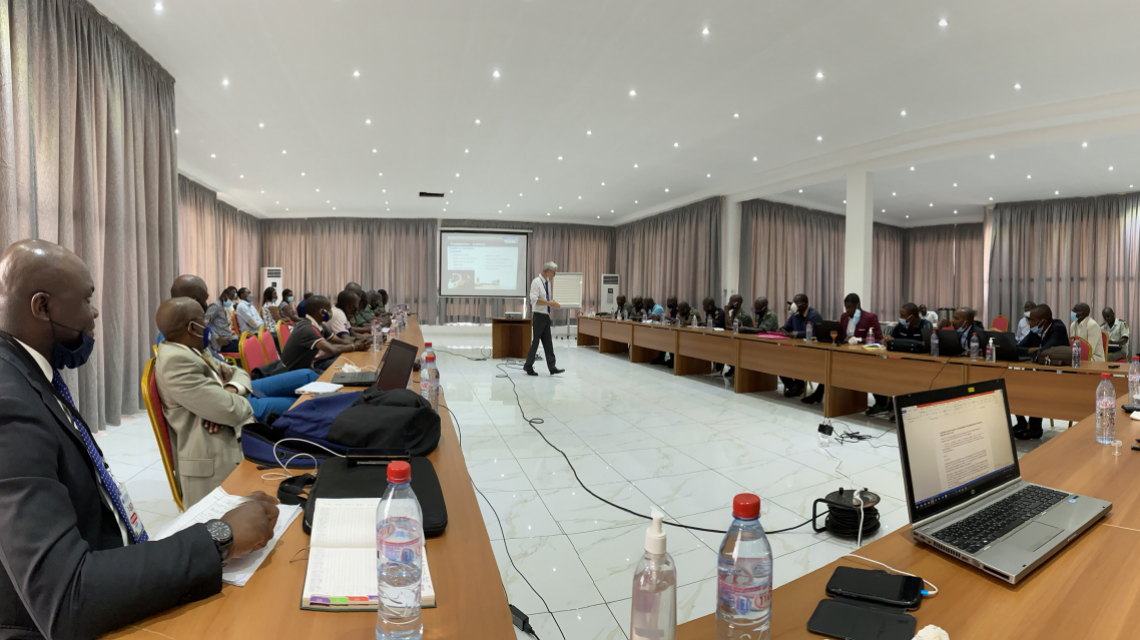Two disused radioactive sources, previously employed in cancer treatment, are now in safe and secure storage in the Republic of the Congo, following successful transport and increased security at their temporary storage facility, with the support of the IAEA.
The sources no longer emit enough radioactivity to be useful for radiotherapy but are still radioactive and therefore need to be controlled and managed safely and securely. They are expected to be exported outside the country next year.
“It took time to understand the risks posed by the disused radiotherapy sources stored for so long in our country. Under the leadership of the President of the Republic of the Congo, all the national actors joined as one to ensure the removal of the disused radiotherapy source, in order to avert any potential radiological impact on the Congolese people,” said Martin Parfait Aimé Coussoud-Mavoungou, Minister for Scientific Research and Technological Innovation.
Securing these two sources is a very significant step towards increased nuclear security in Central Africa, said Raja Adnan, who oversaw the work and activities of the IAEA Division for Nuclear Security as the Division's Director until the end of 2020. “The safe and secure transport and the temporary storage of these disused sources has enabled the country to ensure that there are no risks of malicious acts or accidents with the potential for radiological exposure that could affect the safety of people and the environment,” he said.
Around the world, radioactive material is routinely used to diagnose and treat diseases, to conduct research and to help manufacturers meet industry-related specifications and standards. This material is typically managed safely and securely while in use; however, when it reaches the end of its useful lifespan, the risk of abandonment, loss or malicious acts grows. The IAEA’s Safety Standards and Security Guidance provide the international requirements for safety and security of radioactive material in use, storage and transport, and through its technical cooperation programme, the Agency provides support to countries to recover, transport and manage them.









